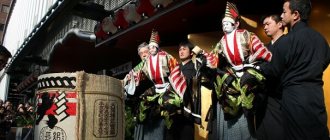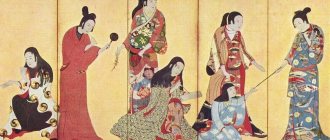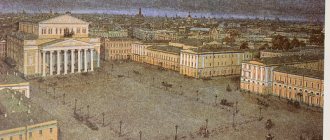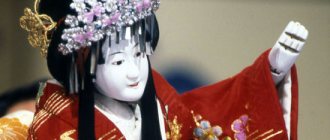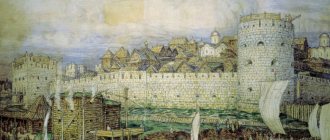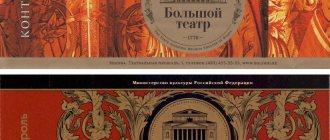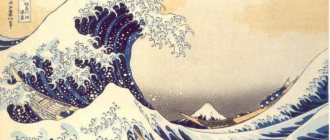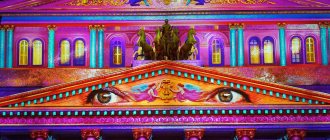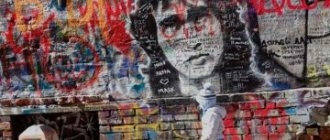What is Kabuki theater?
Kabuki is one of Japan's three main classical theaters, such as Noh and Bunraku (puppet theater), and was recognized as an intangible cultural heritage by UNESCO in November 2005. Kabuki literally means “singing, dancing, skill.” There is also another concept of the word kabuki, which was originally derived from the verb kabuku - unconventional. Initially, it was a dance performance with musical accompaniment without any plot; the dances were predominantly of a religious nature; over time, the concept of kabuki changed both in form and content. Kabuki theater is a spectacular art form that involves intricate costumes, unusual and eye-catching makeup, outlandish wigs and most importantly, exaggerated actions performed by actors on stage. The performances use an ancient form of Japanese that is difficult even for Japanese to understand, so the stylized, polished movements of the actors serve to convey the meaning of what is happening on stage.
Considering that the kabuki theater borrowed many principles from the bunraku puppet theater, the types of performances here are the same:
- Jidai-mono are historical plays created before the Sengoku period (the era of the warring states, XV-XVII centuries). During the reign of the Tokugawa shogunate, there was censorship and it was forbidden to stage plays based on real events and criticize the shogunate. The plays of that time told about the exploits of warriors and, as a rule, were tragedies.
- Seva-mono are plays telling about the everyday life of ordinary people, created after the 17th century. But for the most part, the plot of such plays boiled down to the development of the relationship between the main character, the courtesan and her rival.
- Shosagoto are dance-dramatic plays, and music plays a larger role here than dance, so the performances use drums, pipes and shamisen (a three-string musical instrument). And today, stories with shinjuu are still very popular - when lovers for some reason (property, social, etc.) commit double suicide. During the Edo era, such performances were prohibited, due to the fact that the action taking place on stage began to smoothly flow into real life.
"Dramateshka" is the largest archive of children's plays in RuNet
Make-up (kumadori)
Kabuki theater makeup Kumadori is a well-known method of makeup in kabuki theater. It certainly resembles a mask in some way. All genres of performing arts that preceded kabuki were, one might say, mask performances. In gigaku, bugaku and nogaku, masks were always used. One of the revolutionary changes carried out by the kabuki theater was the abandonment of traditional masks. But in the Kumadori makeup method there remains, as it were, a memory of these masks. Kumadori is a method of makeup specific to the Kabuki theater, characterized by its unique beauty. In general, the red color in makeup symbolizes justice, passion, courage, blue - composure, anger, immorality, black and brown - divinity, otherworldliness. Here are the different types of kumadori. From top to bottom and left to right: a) Hankuma, Nihonkuma, Mukimicuma. b) Dzarekuma, Waraikuma, Sarukuma. c) Tsuchigumokuma, Kugeare, Hannyakuma. d) Tanzenkuma. Kaenkuma, Sujikuma. Kabuki theater has achieved great success in the field of theatrical makeup. It should be noted that Japan once had its own unique views on makeup. So, for example, whitewash was applied to the face not only for the sake of beauty, but also in order to acquire the same supernatural powers that a person acquired by wearing a mask. In ancient times, young novices of temples put on makeup during festivities in order to incarnate themselves as gods, to become heralds of their will. In the song from the play “Mu-sume dojoji” there are these words: “Why did you put rouge on your cheeks and paint your teeth black? To show your devotion to your loved one.” This passage emphasizes the desire to demonstrate one's devotion by applying makeup to one's face. It is interesting that in the feudal era, for example, applying makeup to the face showed respect for elders and people of high rank. Samurai, dai-myo and the emperor's courtiers gave particular preference to rough makeup, when cosmetics were applied to the face in a thick layer. In this case, it was assumed that appearing in front of your husband or master with an unmade up face was considered indecent. At the same time, prostitutes, contrary to the generally accepted opinion that they abused cosmetics, did not use rouge or whitewash, and geisha used them only to a minimal extent. These general views on makeup were not, of course, necessarily transferred to the stage, but society’s perception of it had to be reflected in the theater. Onnagata actors pay special attention to makeup, spending a lot of effort on it. One of the techniques that gives a specific attractiveness to an actor's face is metsuri - tightening the outer edge of the eyelids. Usually, before putting on a wig, wrinkles are smoothed out on the forehead of the person being made up and the skin at the outer edge of the eyes is pulled sideways and upward. When a cap is pulled over the head, onto which a wig is then attached, the face takes on a very unique expression. There were cases when actors even applied makeup to their eyes and tongue. So, for example, to show how in the play “Sembonzakura” Tomomori’s eyes become bloodshot from tension as he lifts a heavy anchor, the actor put rouge in his eyes. There are no such actors now, but in the old days they sacrificed their health to create a greater effect. Many actors died from lead poisoning. They used exclusively poisonous lead white, since such white was applied well to the face. One of the last victims of this whitewash was the late Nakamura Utaemon. In kabuki plays there are scenes where the actor must open his mouth wide and stick out his tongue. In these cases, actors in the old days smeared their tongue with rouge to emphasize its redness. This was used, for example, by actors who played the role of Prince Tokihira in the scene of “Kurumabiki”, Kuronushi in the play “Seki-noto”, as well as performers of the shitadashi samban dance. All these specific techniques have recently begun to gradually disappear. But it must be noted that if we take away the grotesqueness from the original kabuki, this will damage its very essence. A characteristic feature of the role of makeup in kabuki theater is also that it changes right on stage when the theatrical costume and wig change during the action. There is a scene in the play Narukami when the temple abbot, unable to resist the charms of Princess Taemahime, gets drunk with sake and falls asleep. Taking advantage of this, the princess cuts the sacred shimenawa ropes, with the help of which the waterfall is stopped and the rain god is locked away. The rain god is released and rain falls on the earth. The awakened abbot becomes convinced that he has been deceived. He's angry. His clothes change according to his condition, and he imperceptibly, right on stage, applies blue lines of kumadori makeup to his face. This unique technique is an outstanding achievement of the Kabuki theater. In the old stage texts of the play "Sugawaradenju Tenaraikagami" it is said that when Sugawara appears on Mount Tenpaizan, his face immediately turns red. Obviously, in this case, too, the technique of changing makeup directly on stage was used. Disney films use the technique of psychological display with the help of color (one of them shows how the face of a dog, which is sentenced to death, turns pale right before our eyes; the same footage from Bambi, where a female weasel immediately turns red after being kissed by a male). But this technique was used in the kabuki theater several hundred years before the advent of Disney films. It must be said that here, too, the fact that kabuki plays do not belong to the genre of plays based on realism is reflected. Stages of make-up for an actor for female roles Stages of make-up actor for female roles - onnagata.
Nakamura Jakuemon is a kabuki theater actor. Face without makeup. First of all, the actor's hair is tied with a special silk cloth, then white is applied to the neck. Using a special brush, a layer of thick white is applied to the face. Using a brush, paint is applied to the lips and eyebrows, and the eyes are tinted. A layer of white is applied to the hands and feet. The make-up artist applies whitewash to the back of the head. After the makeup is completely applied, a wig is put on the actor's head. The actor is then dressed in theatrical costume, starting with the lower kimono. The actor is put on an outer kimono and an obi belt is tied. The actor checks and touches up his makeup for the last time in front of the mirror. So, the kumadori makeup method is definitely not realistic. The word “kumadori” itself means “applying stripes to the face.” One theory about the origins of kumadori suggests that this makeup technique may have been influenced by Chinese theater, as it is similar to the makeup found in Lianpu makeup samples. The kumadori method developed along with the development of formalistic production of plays about the past. It became especially widespread in the Edo theater world, where romanticism and formalism were popular. Based on color, kumadori can be divided into three large groups. Kumadori in red shades symbolize justice and superhuman strength, while purple-blue shades symbolize fear and hidden anger. In addition, there are special colors of fudokuma and kumadori makeup used to display animals: shishiguchi, tsuchigumo, etc. From the point of view of the effect, kumadori are more formalistic in nature than the meaning of the symbol. This can be understood by comparing kumadori with the German Expressionist method of make-up and the method currently used in modernist ballet. They say that Danjuro the Ninth, in scenes where he had to depict anger on his face, strained the veins on his face and applied makeup directly to the swollen veins with wide strokes. Now that there is electric lighting on the stage, the makeup becomes finer and more and more takes on the character of a fine pattern. With the advent of electric light, the attractiveness of the old method of kumadori disappeared, and in the old days, in the dim light of a lantern brought to the actor’s face, these strips of makeup roughly applied to the swollen veins moved as if alive and made an indelible impression on the viewer. Modern kabuki theater has lost this effect.
Source
History of origin and development
Kabuki appeared at the beginning of the 17th century, or rather in 1603, the birthplace of the kabuki theater in Kyoto. The genre was started by Okuni of Izumo (Izumo-no-Okuni), born in 1571. Okuni was a servant of the Izumo Shinto Shrine in Shimane Prefecture. The prayer dance she performed during the service inspired her to create her own style, which included singing, dancing and acting. Okuni was known for her beauty and skill in dancing. One day she was sent to Kyoto to collect funds and donations for the temple. It was at this time that her performances attracted the attention of the townspeople; in addition to dances of a religious nature, Okuni also showed humorous skits about meetings of lovers. Her skill began to attract large crowds and when it was time to return to the temple, Okuni ignored the demand of the temple abbots, although she continued to send money. Izumo no Okuni remained in Kyoto, gathered around her women, outcasts from society, and taught them to dance. Already in 1604, a stage was built on the territory of the Kitano Shrine for the performance of the Okuni troupe. Since there were only women in the theater, all the roles, both female and male, were performed by women. The kabuki repertoire mainly consisted of comic scenes from everyday life. Gradually, the performances became increasingly popular, and similar troupes began to appear in other cities.
Kabuki performers were not modest and were in great demand among the male population; performances were attended not only by commoners, but also by members of the samurai class. Kabuki became a common form of entertainment in the red light district of Edo. Here you could always meet famous actors, hear new exciting music, and see the latest fashion trends. Class boundaries were blurred against the backdrop of onno-kabuki performances, but clashes and brawls often arose, and government officials were also involved in scandals. All this unrest led to the shogunate banning onno-kabuki (women's kabuki) in 1629, suggesting that in addition to the theater's scandalous reputation, the shogunate was concerned about the plays' depiction of the lives of ordinary people.
Women's kabuki was replaced by young men who quickly mastered the skills of their predecessors and supplemented the performances with acrobatic stunts; the nature of the performances changed and moved from the dance direction to dramatic art. But since the moral side of the Kabuki theater did not change, in 1652 the performance of young men on stage was prohibited. Considering the great popularity of the theater, it could not be closed and mature men began to play on stage, a new type of kabuki appeared, more refined and stylized - yaro-kabuki (prankster kabuki). Until this time, the theater still did not use literary works and was intended to show the beauty and skill of the performers. With the departure of young actresses and actors from kabuki, only the plot of the play could save the theater, so the theatrical action quickly began to be filled with literary works.
Until the 18th century, kabuki theater flourished, but later public interest in the theater disappeared. During the Meiji era (1868-1912), Japan was forced to open up to the world; it was a time of great changes in all areas of Japanese life, with the Kabuki theater being no exception. With the arrival of everything European, it faced the real prospect of destruction. Morita Kanya, the owner of the large theater in Edo, reconstructed the theater in a European style, calling on all his connections for help, ensured that the imperial couple visited kabuki, and the theater rose a notch higher in the eyes of the public.
In the period from 1912 to the Second World War, despite the destruction caused by strong earthquakes, kabuki successfully continued its activities and even toured abroad.
After the war, the occupation authorities recognized the kabuki theater as anti-democratic and set a number of strict conditions for its continued existence. Most plays were banned, new plays were limited in number, and an English translation had to be provided. Most of the prominent kabuki actors died or were killed during the war. The theater was going through difficult times, despite this deplorable situation, troupes began giving performances in September 1945. The Japanese government supported and helped the activities of traditional theaters as much as possible.
The Birth of Kabuki
Kabuki, the national theater of Japan, originated quite a long time ago, back in the early 17th century.
Although its appearance was initially associated with performances for the benefit of temples, it quickly turned into a folk one. Not without the help of private patrons. Kabuki has long been synonymous with originality, color and immodesty. Kabuki dancers could be seen from afar: they were distinguished by hair that was not collected according to traditional Japanese canons, overseas crosses on their necks and a special style of gait. "Modern" in its truest sense.
The temple dancer Okuni laid the foundation for this type of theater. At first it was just dances, the most popular of which was nembutsu-odori - a Buddhist prayer dance.
Subsequently, she diversified her repertoire with Yayakko-odori and Oharagi-odori dances. For variety, Okuni periodically dressed as a man and acted out some scenes while dancing.
Kabuki today
Nowadays, kabuki is the most popular of the classical theaters in Japan; spectators willingly come to the performances. In addition to traditional male troupes, after the war a female kabuki troupe, Ichikawa Kabuki-za, appeared, but women were unable to achieve the skills that had been honed by male actors for 400 years. Kabuki actors act in films and are frequent guests on television programs.
The introduction of headphones into the theater in 1975, including an English translation in 1982, kept foreigners interested. Since 2005, kabuki films began to be produced and sold. The theaters actively tour Asia, Europe and America. A monument was erected to the founder of the genre Izumo no Okuni in 2002, on the 400th anniversary of the formation of kabuki in Kyoto.
Today, large and famous kabuki theaters are located in cities such as Tokyo, Kyoto, Osaka, Fukuoka. The architecture of the theater is a separate topic of conversation and will be discussed in subsequent articles. There is also a very large and interesting topic about the acting dynasties of the Kabuki theater. In the near future I will write about this on the pages of my website. Until next time.
Fatal XX century
The Japanese-Chinese and Russian-Japanese wars also dealt a big blow to kabuki. There was so much excitement around these events that it immediately spilled over into art: from newspaper articles to theater.
Plays for kabuki began to come not only from Mokuami and Kawatake, but also from other writers who had not previously been in any way connected with the theater. The Meijin version of kabuki theater finally disappeared in the first decade of the 20th century. The struggle between the Literary Society and the Free Theater was in full swing.
Gradually, kabuki began to lose its usual appearance: new acting techniques appeared that diluted the traditions of the old school. Moreover, it appeared, which took over all Tokyo theaters. Kabuki ceased to be a folk theater, finally becoming a commercial one.
Japan, which had long been isolated from the rest of the world, discovered many new things, including in art. The 20th century became fatal for the kabuki theater; it constantly had to fight with European types of theater: operetta, mass theater, cinema, etc. All this relegated it to the background, leaving it a small niche among other types of traditional theater: noo, bunraku and others .
Types of productions
In Kabuki you can see three types of performances:
- Jidai-mono. These plays cover the period from the 15th to the 17th centuries and are usually dedicated to some historical events that occurred in reality. Jidai-mono tell about the exploits of great warriors and have a tragic overtones;
- Seva-mono. The production is based on a plot about a noble hero, a courtesan who fights for his love, and her rival;
- Sesagoto. Performances in which musical accompaniment comes to the fore. Their plot is usually simple. It tells the story of two lovers who, due to circumstances, cannot be together. At the end of the performance, the characters commit suicide. For a long time, Sesagoto's plays were banned in Japan because some young people followed the example of the main characters.
Traditional Japanese Noh theater.
An important role was played by music in traditional types of Japanese theater, which arose in the early Middle Ages and is an interesting manifestation of national Japanese culture. Theater performances in Japan are a synthesis of music, text, acting and dance.
It is believed that Noh theater arose from more ancient religious performances dedicated to the Sun Goddess, once held under the sacred pine tree of the Shinto shrine in the city of Nara. The connection between the Noh theater and these ritual mysteries can be seen in the traditional scenery, which depicts a pine tree (a symbol of eternity and immutability).
Apart from this decoration, there is nothing on the stage. Its floor is polished to a mirror shine, which forces the actors performing in white socks to move in a very peculiar way - with a sliding, smooth step. Empty jugs are installed under the platform, which, acting as a kind of resonators, greatly enhance the sound of every word and movement performed on stage.
All roles are performed only by men. (It’s interesting that the audience is not at all embarrassed that the heroine of the play has a low male voice).
Some performances include a child in the cast who plays the role of the emperor. This tradition appeared in Japan in the 14th century, due to the ban on depicting persons of the royal house on stage.
As for the content of the plays, they were always based on ancient legends, famous novels and other plots that already existed and were known in advance to the viewer. This determined the specifics of the development of action in Noh theatrical productions. The whole story was not shown on stage, only that part of it that was key in the life of the main character was played out.
Usually, this happened in two stages. First, a certain wanderer (very often a Buddhist monk) meets the main character (usually a legendary figure) and asks him some leading questions about who he is, what his story is. But in the second part, a different version of the essence of the main character (ghost, deity, spirit, demon, etc.) appears before us and tells us what once happened to him.
Auditorium
The scene in the Kabuki theater looks unusual for a European viewer. It is a long wooden platform stretching across the entire hall.
The scenery, called odogu, is quite complex. These can be platforms with steps, hatches and rotating walls and screens. Thanks to this, it is possible to create all kinds of effects, for example, sudden disappearances or appearances of characters.
All objects on stage should be smaller than their size in real life. They act as symbols and should not distract the viewer's attention.
The actors emerge from the hanamichi, a special structure located on the left side of the platform. Hanamichi is used to achieve dramatic effect, for example to convey the tragedy of characters' separation. Translated from Japanese, “hanamichi” means “path of flowers.”
Kabuki characters
The heroes of the performances can be divided into several categories:
- "Tatiyaku" is a brave, noble young man who can be either a warrior or a hero in love with a beautiful lady;
- "Katakiyaku" is the antagonist of the play. Opposes the main character, he is distinguished by cunning and deceit. Sometimes Katakiyaku is revealed as a positive character who, due to circumstances, is forced to commit an unpleasant act;
- “Dokekata” is a comedian who brings humor into the action and makes the audience laugh;
- “Koyaku” is a character played by a child;
- “Onnagata” is a collective name for all female images. This could be an elderly wise lady or a young girl, a warrior or the wife of one of the characters.
The appearance of each character has a symbolic meaning. The viewer should immediately guess the character of the hero and his place in the upcoming play by the poses, shades used in makeup, as well as by the position of the hands.
